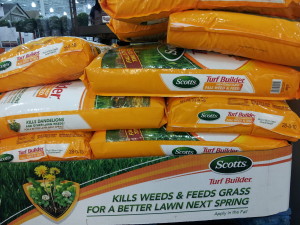 For a while now researchers have been finding that certain environmental chemical exposures are linked to the development of amyotrophic lateral sclerosis (ALS), which is commonly called Lou Gehrig's disease. Frequent exposure to pesticides and heavy metal and VOC exposure in solvents (e.g., in woodworking) are linked to ALS.
For a while now researchers have been finding that certain environmental chemical exposures are linked to the development of amyotrophic lateral sclerosis (ALS), which is commonly called Lou Gehrig's disease. Frequent exposure to pesticides and heavy metal and VOC exposure in solvents (e.g., in woodworking) are linked to ALS.
A recent study found that storing chemicals such as gasoline, kerosene, gasoline-powered equipment, lawn care pesticides, paint, and woodworking chemicals in an attached home garage is also linked to a higher risk for ALS. These are toxic chemicals that are volatile - get into the air.
The researchers felt that not only did the persons with ALS have a history of exposure by working with the chemicals, the chemicals also leach into the air when stored in the home (the attached garage). Every time the door to the garage is opened, the chemicals in the garage air rush into the home.
Earlier studies found higher amounts of pesticides in people with ALS, as well as faster disease progression. Certain pesticides show up repeatedly in studies, including 2,4-D, glyphosate, carbaryl, and chlorpyrifos. Note that 2,4-D is in popular feed and weed products (and was in Agent Orange), and glyphosate is in the commonly used Roundup.
ALS is a progressive and fatal neurodegenerative disease. There is progressive loss of motor neurons, the nerve cells in the brain and spinal cord that control voluntary muscle movement and breathing.
From Science Daily: Chemicals stored in home garages linked to ALS risk
Over the last decade, researchers at University of Michigan continue to find that exposure to environmental toxins -- from pesticides used in agriculture to volatile organic compounds in the manufacturing industry -- is linked to the development of amyotrophic lateral sclerosis, or ALS. ...continue reading "Pesticides and Other Chemicals Stored in Home Garages Linked to ALS Risk"
